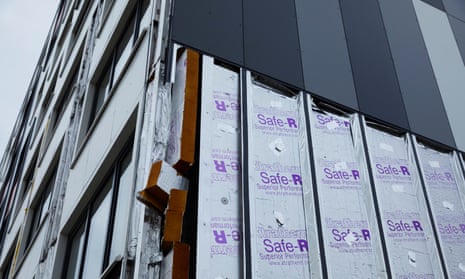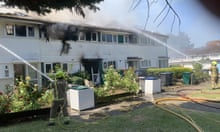Six of the UK’s largest banks will start lending on medium and high-rise flats with cladding from January, in a move that could help thousands of people stuck in properties they have not been able to sell or remortgage.
Lenders including Barclays, HSBC, Lloyds, Nationwide Building Society, NatWest and Santander, said they would consider fresh mortgage applications from 9 January, after receiving long-awaited guidance from the Royal Institution of Chartered Surveyors (Rics) on how to value affected properties.
The changes stand to benefit mortgage prisoners and prospective buyers of cladding-affected flats in buildings more than 11 metres high, though they will still need to prove that the dangerous materials will either be removed by developers, or covered by leaseholder protections or a specific government scheme.
The banking lobby group UK Finance said in a statement that the announcement was a “significant step to enable lending to recommence”.
Mortgage providers pulled back from lending against flats with cladding in the aftermath of the Grenfell Tower disaster, which revealed costly safety problems in buildings across the country.
Banks said a lack of updated guidance on valuations had until now restricted their risk assessments and ability to lend against those affected flats.
“Lenders have confirmed that this will help to get the property market moving again by helping buyers and innocent leaseholders, who have been stuck for too long, to sell their homes,” the minister for local government and building safety, Lee Rowley, said.
“This is possible because of the protections for leaseholders in the Building Safety Act, and our commitment to getting buildings fixed, whether through our own remediation schemes or as a result of the pledge from developers.”
Campaigners cautiously welcomed the move. “It sounds positive and is a step in the right direction, but there is a question of how it will be implemented on the ground”, said Giles Grover, the co-leader of the End Our Cladding Scandal campaign.
after newsletter promotion
For example, he said property owners will be concerned about how tough assessments might be, and how much of the value of a property might suffer as a result of remaining cladding, regardless of plans to remove them. There were also questions of the cost of building insurance, which has yet to be resolved.
Rics is expected to monitor the impact of the new guidance to ensure it is “proportionate, fit for purpose and helps facilitate mortgage lending”, an industry statement explained.









